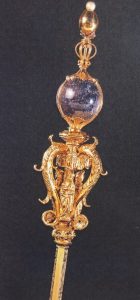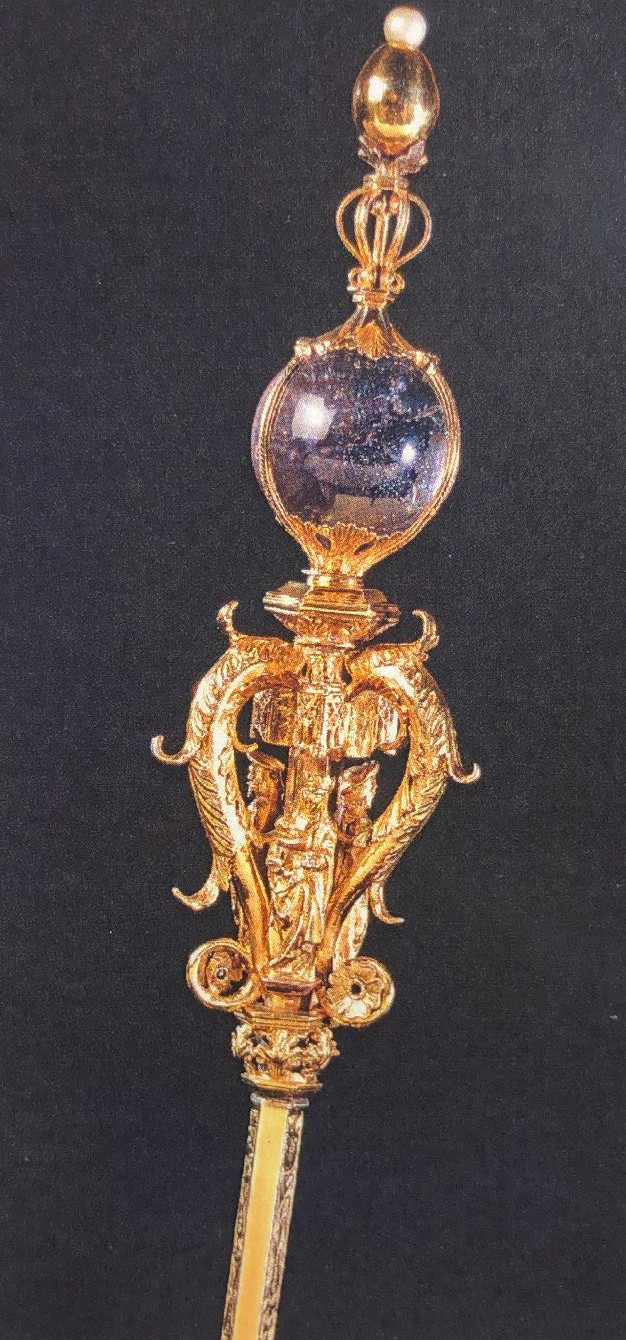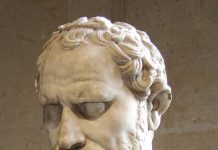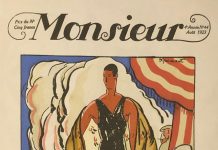With the world-renowned Tucson Gem and Mineral Show for 2021 cancelled, one of the finest opportunities to buy extraordinary crystals in person has evaporated until 2022. However, for those on your Christmas list who want (or need) a crystal, there is an alternative: this book based on a museum exhibit.
From late 2019 to early 2020, the Crystal Bridges Museum of American Art in Bentonville, Arkansas hosted an exhibit of crystals going back to 2000 BCE in ancient Egypt. The fairly large format (9.5 x 11 inch) softcover book contains 3 essays followed by full-colour plates of all the pieces in the exhibit, many of which were loaned by the Met in New York, the Asian Art Museum of San Francisco, the Cleveland Museum of Art, and the Getty Museum. Some items from private collections are also included.
The photography is top-notch, showing every piece to best advantage. While each item is accompanied by its dimensions, artist (if known) and date/place of origin, we are left wondering about the provenance (the backstory, in modern parlance) of many items. For me the most intriguing is the crystal skull, which is simply listed as Mexican, with not even a suggestion as to when it might have been made. In Canada I saw the Mitchell-Hedges skull, which was purported to have been found in British Honduras in 1924. It was named after an explorer who was the inspiration for Indiana Jones. Examination of the skull within the last few years has revealed it to be a modern fake, not deriving from ancient Mayan times. What about the one from the Smithsonian, pictured in this book? No answers are to be found here.
The first essay, by Joachim Pissarro, a professor of art history, discusses “crystals in art.” He puts the fascination with crystals very well: “Crystal is unique in more ways than one. No sooner is it pulled out of the earth than it reveals its perfection, its brightly transparent volumes, fully formed, and often of exquisite beauty.” The main thesis captured by the exhibit is that they “represent a bridge between human artistic creation and otherworldy spiritual forces.”
Crystal was used in Egyptian times, but Pizzarro traces its widespread use in the Roman empire to a different source. “Rome may well have acquired a deep taste for crystal from their neighbouring Greek neighbours,” a double use of neighbour that could surely have been improved upon even without resort to having the text checked by a professor of English.
While most of the artwork in the book is actually made of crystal, several of the examples from modern times are not. Indeed, a few seem to have no relation whatever to crystals, including a work of 18 tiles entitled Tides, which is composed of “water, dye, anodized aluminum.” Compared to the masterpieces of crystal art on display here, such as the 35-inch-high altar candlesticks from Italy (1620-1640); the crystal flask studded with enamel, rubies and emeralds from India (c 1650); the seated Buddha from Thailand (1400-1500); or the Faberge cigarette case (1895-1910), it is more of a sad reflection on how debased modern ‘art’ truly is.
Some items pictured in the book were not actually in the exhibit, including the Sceptre of Scotland, pictured with this review. The text by T.R. Paradise (professor at the Univ. of Arkansas) tell us it was created in 1494. “The orb at its centre in an 8cm quartz crystal globe that represents rarity, power, clarity, and divine association.” One must visit Edinburgh Castle to see it.
In his excellent essay, Paradise gives us a geological overview of the crystal mining in Arkansas, where the exhibit was held. “The gleaming crystals from Arkansas are some of the most coveted on Earth,” he writes, having been formed there 240-280 million years ago. He also delved into Asian art: “Early Japanese legends explained that small quartz crystals were ‘the breath of the White Dragon’.”
Overall this book is a fascinating and insightful look at the majesty of crystals throughout human history, with their use and representation in various media from Egypt to Warhol. Beautifully presented and a delight to behold.
There is a typo on pg 22: the Abramovic Method is spelled correctly the first time, but becomes the Abromvi Method a few lines later.
Crystals in Art: Ancient to Today, edited by Lauren Haynes and Joachim Pissarro is $44.95 by Univ. of Arkansas Press.














